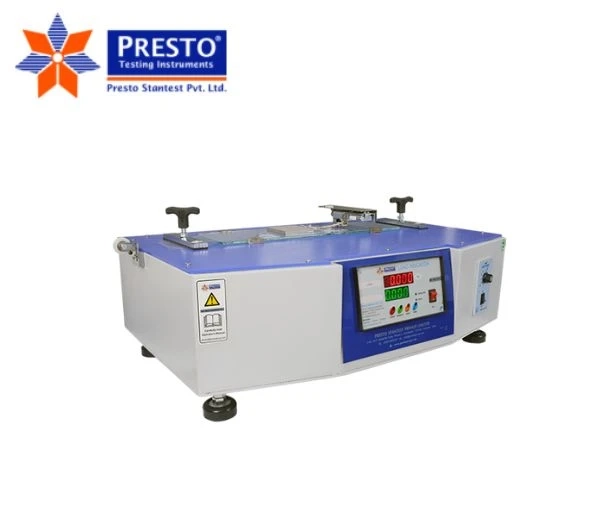Friction is a fundamental concept in materials testing, and yet it’s often overlooked outside of technical circles. In manufacturing, packaging, and quality control, understanding frictional behavior is not just beneficial—it’s essential. This is where the coefficient of friction tester in Kenya plays a key role.
Whether you’re working with paper, plastic films, textiles, or metal surfaces, knowing how materials interact when they come in contact can determine performance, safety, and compliance. Let’s take a closer look at what this tester does, why it matters, and what to consider when selecting one.
What Is a Coefficient of Friction Tester?
A coefficient of friction (COF) tester is a device that measures the resistance between two surfaces when they slide against each other. It quantifies two types of friction:
- Static Friction: The force needed to start movement.
- Kinetic Friction: The force required to maintain movement.
Both values are critical for applications where materials must move smoothly or stay in place, think conveyor belts, packaging materials, or coatings. A typical COF tester involves a platform and a sled or block that is dragged across a test surface under controlled conditions.
Why Is It Relevant in Kenya?
Industries in Kenya, from food processing to pharmaceuticals and industrial packaging, are increasingly reliant on quality standards and regulatory compliance. This has brought about a growing demand for precise material testing instruments, including the coefficient of friction tester in Kenya.
With imports and exports on the rise, materials must meet global standards. COF testers help manufacturers ensure that:
- Plastic wraps don’t stick too much or too little.
- Lubricated parts perform reliably.
- Coated surfaces behave as expected under pressure.
Whether you’re exporting tea sachets, manufacturing textiles, or packaging hardware tools, consistent material behavior matters.
Key Features to Consider
If you're thinking about testing friction in your materials, here are some of the main features to keep in mind when evaluating a COF tester:
Features
- Test Speed Control - Ensures reliable, repeatable results under defined conditions.
- Data Output - Digital models can store, export, and analyze results.
- Weight and Sled Size - Different industries may require varied sled configurations.
- Compliance Standards - Look for adherence to ASTM D1894, ISO 8295, or TAPPI T816.
- Temperature Control - Important for materials sensitive to heat or humidity.
Applications Across Industries
The usefulness of a COF tester extends across multiple sectors. Here's how various industries in Kenya benefit:
- Packaging: Evaluates how well films glide during wrapping or sealing.
- Printing: Ensures that papers or films don’t jam during high-speed operations.
- Agriculture: Assesses the texture and packaging of agricultural exports like tea, coffee, or produce.
- Pharmaceuticals: Verifies slip characteristics of blister packs and medical films.
- Construction: Tests flooring or tiling materials for slip resistance.
By applying consistent testing, businesses not only reduce waste and returns but also maintain product reliability.
Common Testing Standards
Different industries often require specific testing standards. Some of the most recognized include:
- ASTM D1894 – Standard test method for static and kinetic coefficients of friction of plastic film and sheeting.
- ISO 8295 – International standard for plastic film testing.
- TAPPI T549 – Standard for measuring paper surface friction.
Compliance with these helps organizations align with regulatory bodies and global buyers, especially in export-heavy industries.
Challenges in Local Implementation
While COF testers are vital, there are still a few hurdles for Kenyan industries to overcome:
- Training Gaps: Operating a COF tester accurately requires skilled personnel.
- Calibration and Maintenance: Instruments need routine calibration to maintain precision, which isn't always easily accessible.
- Cost Factors: High-quality testers can be a significant investment, particularly for small or medium enterprises.
Despite these challenges, the growing awareness of quality assurance and the rise of Kenyan products in international markets are slowly driving adoption.
Looking Into the Cost
If you’ve already decided that friction testing is relevant for your setup, understanding the coefficient of friction tester price in Kenya becomes essential. Prices can vary widely depending on specifications like automation level, material compatibility, and added features like integrated software.
Generally, basic manual testers will cost significantly less than advanced digital or fully automated models. However, it's important to view this as a long-term investment. The right device can prevent production mishaps, enhance quality control, and streamline product development.
That said, the coefficient of friction tester price in Kenya is gradually becoming more competitive, especially as local suppliers and distributors begin to meet increasing demand with flexible options and service packages.
Final Thoughts
The role of the coefficient of friction tester in Kenya is expanding as industries place more emphasis on material performance and compliance. Whether you're part of a packaging unit, involved in exports, or simply looking to enhance your quality control protocols, understanding friction behavior is a step toward better, more reliable products. Choosing the right tester isn't just about specs; it's about aligning with the specific demands of your workflow. With proper implementation, this seemingly small device can make a measurable difference.


